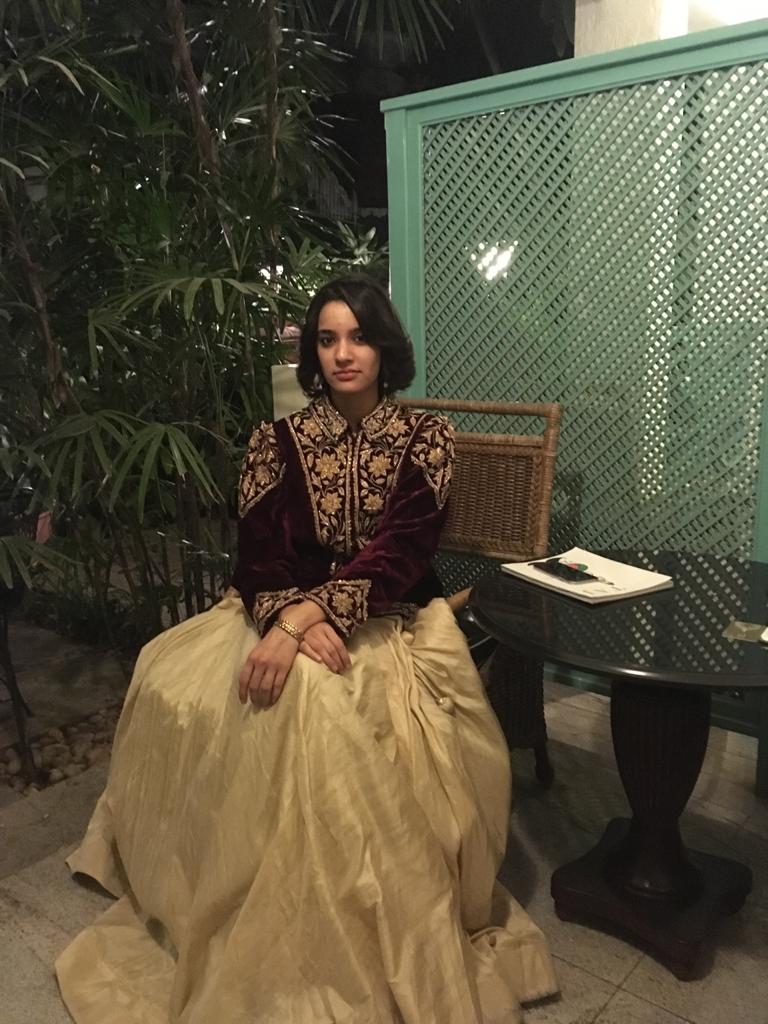There is an enigma that surrounds people with deep roots and a legacy to conserve. No matter where they travel, work or reside, their hearts take them back to where they belong. This is the case with the Jadhav family of Aaron and Myana, heirs to possibly the largest jagirdari of Gwalior, who are true blue global citizens—Sardar Dhananjay Jadhav spearheading a large British–Iraqi conglomerate, son, Dhruv Jadhav, working for a leading consultancy firm based out of Oman, daughter, Rohini Raje Jadhav, living between Los Angeles and Mumbai, where she consults as a producer designer in mainstream cinema, and the elegant Uma Devi, juggling all the worlds with immense élan, poise and dexterity.







But, no matter where life takes them, they inadvertently find their way back to Deo Bagh, a grandiose palace surrounded by a garden designed in the typical Persian ‘Char Bagh’ style, its verdant lawns, fragrant trees and stunning vistas tastefully segmented into four sections marked by walkways and flowing water bodies. A Neemrana property today, it is the home where Uma Devi, a Patankar girl, came to as a bride. “For us, it is our home, a place where we are gripped with true inner peace,” she shares.
A graceful and elegant Maratha, Uma Devi is all brains and has worked both as an economist and a business journalist in Oman, till the tasks of keeping her family heritage alive consumed her and made her live her life between two realms constantly. She laughs, “While other Rajput and Maratha wives are busy working with crafts and art, I am totally occupied in making Deo Bagh an award-winning property.” Also a culinary genius, she spends her life reviving many forgotten recipes that were part of the Jadhav kitchen history. She shares, “The Marathas were warriors. The men were constantly on the move, eating whatever they could hunt and cook in the finest dry masalas that their women would pack for them.”
The Jadhav men, Dhananjay and Dhruv, are committed to keeping their recipes alive, while Uma ensures that the guests at Deo Bagh get treated to their rare dishes. “Every family has their own take on typical Maratha dishes. We serve a silver thali meal with our kala masala barbat, our special chicken pulao, patar bhaji made with spinach, our version of the kadhi, vade kumbde, waran bhat and gole ka bhaat that is made in the most authentic Maratha style as practiced by the Jadhav family,” she says.
History has it that the Jadhavs were proud residents of the Maratha region that surrounds present-day Pune. In support of the Chhatrapati, they would constantly travel with their troops up north to support the many fierce Maratha-Afghan battles in the Gangetic–Doab basin of Anterbed—wars that directly benefited the Scindias of Gwalior. As the wars kept consolidating the Maratha territory, tiny princely states like Devas and Dhar began getting carved in the Central Province. The Gwalior rulers, indebted to the Jadhavs, requested them to stay back and gifted them the Aaron and Myana jaagir, which consisted of 280 villages and is possibly bigger than many princely states.
They settled in Gwalior where they constructed the large Jadhav Mahal, a statuesque palace built in the ornamental style typical of that era. Situated in the heart of the town, it was the original home of the Jadhavs. It is from the Jadhav Mahal that the present HH Rajmata Shubhangini Raje of Baroda, Dhananjay’s sister, was married off.
In the late 1600 AD, an important Mughal general camped in this Char Bagh that has a stunning baradari in the centre. The Jadhav family took possession of this natural water catchment area as the conquering Maratha army marched towards Delhi. According to history, Sardar Deorao Bhausaheb Jadhav and his son, Sardar Krishnarao Deorao Jadhav, converted the chhattisdari (36-pillared pavilion) into a summerhouse, and that’s how Deo Bagh came into being. The palace was divided into a ladies’ section (zenana) in the Deo Vilas and the men’s section (mardana) in what is the family’s current home, Jia Vihar. The garden complex houses exquisite cenotaphs, family temples, and a ‘hathi khana’. Sardar Deorao Krishnarao’s wife, Ranisaheb Kamala Devi Jadhav, also ran a community school in the zenana section.
The fierce Jadhav clans also trace their lineage to Chhatrapati Shivaji’s mother, Jijabai, who was a Jadhav girl. She had brought Shivaji Maharaj to the Jadhav home in Marathwada. “It is there that she taught him the lesson of ‘swarajya’ and instilled in him the fierce pride to fight for his kingdom,” shares Uma.







